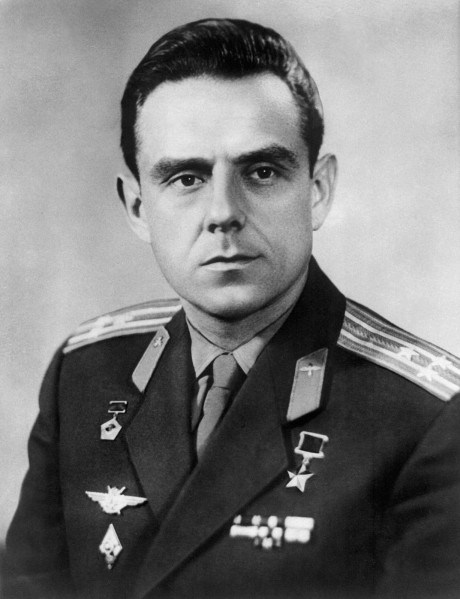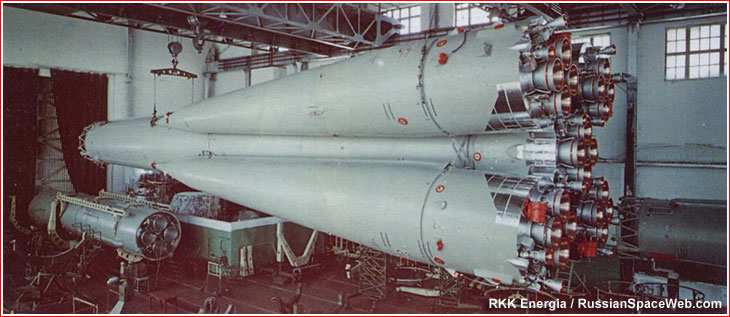Vladimir Komarov
Russian - (RFSA)
Lost In Flight
Date of Birth: March 16, 1927
Date of Death: April 24, 1967
Vladimir Mikhaylovich Komarov (Russian: Влади́мир Миха́йлович Комаро́в, IPA: [vlɐˈdʲimʲɪr mʲɪˈxaɪləvʲɪtɕ kəmɐˈrof]; 16 March 1927 – 24 April 1967) was a Soviet test pilot, aerospace engineer and cosmonaut. In October 1964, he commanded Voskhod 1, the first spaceflight to carry more than one crew member. He became the first cosmonaut to fly in space twice when he was selected as the solo pilot of Soyuz 1, the first manned test flight of a new spacecraft. A parachute failure caused his Soyuz capsule to crash into the ground after re-entry on 24 April 1967, making him the first human to die in a space flight.
Voskhod | Voskhod 1
Soviet Space Program | RussiaBaikonur Cosmodrome, Republic of Kazakhstan
Oct. 12, 1964, 7:30 a.m.
Status: Success
Mission:
Voskhod 1 was the seventh manned Soviet space flight(Commander-Vladimir Komarov, Engineer Konstantin Feoktistov, and Medical Doctor Boris Yegorov) . It achieved a number of "firsts" in the history of manned spaceflight, being the first space flight to carry more than one crewman into orbit, the first flight without the use of spacesuits, and the first to carry either an engineer or a physician into outer space. It also set a manned spacecraft altitude record of 336 km (209 mi).
Low Earth OrbitSoyuz | Soyuz 1
Russian Federal Space Agency (ROSCOSMOS) | RussiaBaikonur Cosmodrome, Republic of Kazakhstan
April 23, 1967, 12:35 a.m.
Status: Success
Mission:
Soyuz 1 was the first crewed flight of a Soyuz spacecraft, it carried the Soviet cosmonaut Vladimir Komarov to orbit. The mission goal was to rendezvous with Soyuz 2 and move crew members between the spacecrafts, the goal was not met due to Soyuz 2 launch being called off due to thunderstorms. Vladimir Komarov was killed when the parachutes of his Soyuz capsule failed during descent to earth becoming the first in-flight fatality of spaceflight.
Low Earth OrbitThe Roscosmos State Corporation for Space Activities, commonly known as Roscosmos, is the governmental body responsible for the space science program of the Russian Federation and general aerospace research. Soyuz has many launch locations the Russian sites are Baikonur, Plesetsk and Vostochny however Ariane also purchases the vehicle and launches it from French Guiana.
Electron
The Wisdom God Guides (iQPS Launch 6)
Rocket Lab Launch Complex 1B - Rocket Lab Launch Complex 1, Mahia Peninsula, New ZealandSynthetic aperture radar Earth observation satellite for Japanese Earth imaging company iQPS.
New Shepard
NS-37
West Texas Suborbital Launch Site/ Corn Ranch - Corn Ranch, Van Horn, TX, USANS-37 is the 16th crewed flight for the New Shepard program and the 37th in the New Shepard program's history.
Long March 5
TJSW-23
101 - Wenchang Space Launch Site, People's Republic of ChinaChinese classified satellite claimed to be for communication technology test purposes. Actual mission not known.
Electron
Don't Be Such A Square (STP-S30)
Rocket Lab Launch Complex 2 (Launch Area 0 C) - Wallops Flight Facility, Virginia, USASTP-S30 is a complex mission that will deliver research experiments and technology demonstrations to orbit for the DoD and contribute to future space…
Falcon 9
Starlink Group 15-13
Space Launch Complex 4E - Vandenberg SFB, CA, USAA batch of 27 satellites for the Starlink mega-constellation - SpaceX's project for space-based Internet communication system.



